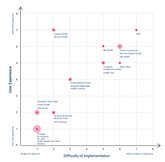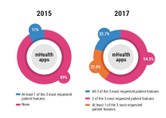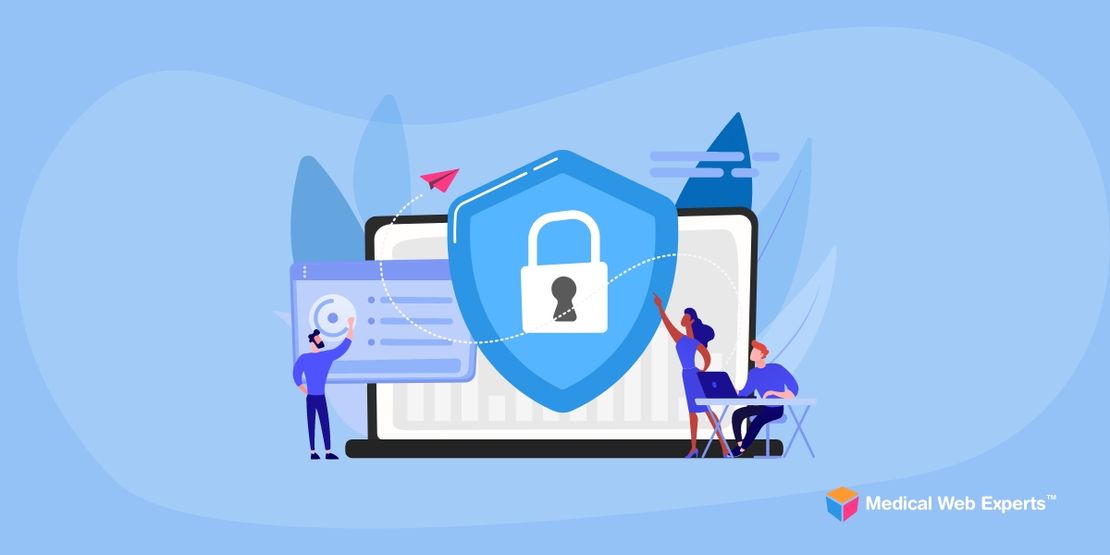In Parts I, II, III and IV of this series, we evaluated the current state of health system app development and found that it is still very far behind where it should be.
Health System apps being released are still sub-par
In Part I, we outlined the findings of the 2015 studies done by Accenture and IMS on the state of digital health: mhealth apps lacked relevant features for patients. They were also found to be behind in integration across disparate health IT systems.
To compare with the 2015 studies, we chose 22 currently available mhealth apps and evaluated the apps based on the features offered, functionality, user experience, downloads and user ratings for 2017. The information gleaned shows that significant shortcomings still exist in the health system app development market, including:
- Limited functionality for mHealth app features
- Misleading functionality descriptions in app stores
- Misalignment of core features with those most requested by patients
- Lack of focus on a single app
- Limited app downloads and/or poor ratings
Below, the apps we evaluated are listed:
[table id=5 /]
Healthcare systems are opting for ease of implementation over user experience and value
It is clear that while mHealth adoption has slowly grown over the last few years, mHealth application developers have not kept up with the user experience of the most popular consumer apps in other industries, such as Uber and Airbnb, who seamlessly implement in-app features for their users. Instead, many health system apps opt for ease of implementation, skipping over vital functionalities that users expect, such as the ability to simply schedule an appointment online. In many cases, for instance, where an appointment request or self-scheduling form should have existed, health systems opted for simply providing a list of phone numbers to call to make an appointment.
The frustration of the user is understandable, especially if you imagine having a parallel experience using a trusted app: imagine you want to reserve an Airbnb using their mobile app, but when you went to send the reservation request, it took you to a page that tells you you have to call a phone number instead. Or imagine an online banking app that had no current balance or statement, just advice on how a customer might get obtain this information.
These shortcuts and incomplete workflows are limiting the value branded mHealth apps are delivering to patients. Health systems that are able to align these patient expectations with their implemented mHealth app technology are in a better position to see positive patient engagement results.
The marketed user experience does not match the app functionality
After downloading the apps and analyzing them, it is clear that the functionalities promoted in the app descriptions – whether in iOS or Google Play app store, or the health organization’s marketing materials – are treated equally whether the feature is delivered in the app, linked out to a browser or requires a login to the health provider’s patient portal. Therefore, there is a certain level of over-statement present in the app descriptions that might mislead users and establish false expectations. For example, look at the following app description:
In the example above, the patient would expect to be able to use all of the features listed after downloading the app. However, in reality, the features are more adequately described by the following table:
Like in the example, many app descriptions do not distinguish in-app and linked out functionalities in the app store. So, when downloading the app, the user believes they will be getting rich functionality with a seamless user experience without the need to download extra apps. Instead, what they get is a mix of native and features linked-out to other applications; it would be as if, in order to use Uber or Lyft applications, you needed to download and enter your information into a completely separate application in order to pay for your ride. While from an implementation standpoint this course of action is much easier, the overall value created through the app is minimal for both internal stakeholders and patient users.
The graphic below represents a description of how the mHealth apps assessed in this series of articles align in terms of creating a great user experience versus implementing features in as simple a way as possible for the technical team developing the app.
The graph shows a clustering of almost 50% of the apps evaluated around easy to implement, poor-user experience features. This does not necessarily apply to every health system and app evaluated. A small group of forward-thinking health systems are implementing complex features with high scores on user experience. However, the proportion of health systems evaluated that fall into this cluster is worth noting.
Health system app features still not aligned with user expectation
The mHealth app features in 2017 still fail to incorporate the functionalities patients are coming to expect in an app. These features include:
- Access to electronic medical records
- Only offered by 59% of the apps evaluated
- Appointment scheduling and changes
- While 59% apps included this feature, only one of the twenty-two allows for real time self-scheduling; the rest direct the patient to fill out a request form or call a number.
- Prescription refills
- Still a commonly linked-out feature, it is also only offered by 27% of the applications.
The table below represents the number of apps assessed that include the functionality described:
[table id=3 /]
In the end, it seems that only 54.5% of the branded mHealth apps evaluated include at least 2 of the 3 features patients most frequently request from providers – and a mere 22.7% include all three – indicates real opportunities for improvement for mHealth app developers.
Overall, core features are still missing from mHealth app development, meaning frustrated patients, and health systems at risk of losing brand loyalty.
Conclusions: Why is health system app development still so far behind?
We have a few hypotheses on why health system app development is not delivering the quality apps users have come to expect.
Lack of resources
It’s a huge undertaking and many health systems lack the skilled resources to embark on this journey.
Internal politics
Many companies prefer to do health system app development in-house, using their own IT staff. So, if an outside company is offering an application with superior qualities than what could be developed in-house, this creates competition between in-house app development and outside app development. This is especially true for large health organizations that already have an internal IT department because many internal IT teams are very reluctant to grant that access to outside companies due to potential information security concerns. This tension can impede the process of producing the most effective app for patients.
Complicated to implement
While some may be choosing not to have an application at all because of how complicated and expensive it is to implement, others are just checking off the box of having an app. But while some healthcare systems have put in the effort to have an app, they are doing it at a bare minimum, and not including necessary functionality.
Blind to the connection between patient engagement and positive return on investment
Healthcare systems have not yet opened their eyes to the direct connection between patient engagement, return on investment and brand loyalty. John Deutsch, CEO of Bridge Patient Portal, points out that “…Healthcare organizations have struggled to make the connection between a virtually engaged patient and Return On Investment. This is starting to change, but the time it takes from idea, to implementation, to analysis is something few organizations have been able to support, let alone doing all of this with a high-functionality mobile app. We at Bridge have set out to change this through the development of our market-leading patient engagement solution and partnerships with some of the most forward-thinking healthcare organizations.”
So far, only the more innovative groups have embarked on this journey toward engaging patients using high-functionality applications. An effective and useful healthcare system app, means an engaged patient, who is more likely to stay loyal to the hospital brand. According to Accenture’s 2015 report, large health systems and integrated networks could save as much as $100 Million per year per hospital in avoided revenue loss by providing a superior, multi-platform digital patient experience. Here at Medical Web Experts we are working to change the status quo by focusing on high functionality applications, website branding, medical website design, custom health app development, internet marketing, and more.
New vendors addressing these mHealth functionality problems are appearing in the marketplace. Universe mHealth – a new healthcare app company, for example provides a patient engagement solution with native experience for users to schedule their own appointments, view their medical records, pay their bills and more, all in real-time through integration with the Electronic Medical Record, Practice Management and Revenue Cycle Management systems.
You are reading Part V: Summary Report of Health System App Development Progress of the series “Annual Check-up: mHealth Apps are Still in Critical Condition.” Read the other parts here:
Part I: Healthcare App Development Market is Not Meeting Patient Needs
Part II: Limited Functionality for mHealth App Features
Part III: Misleading Functionality Descriptions in App Stores
Part IV: Core Features Are Still Missing from mHealth Apps for Hospitals and Health Systems










